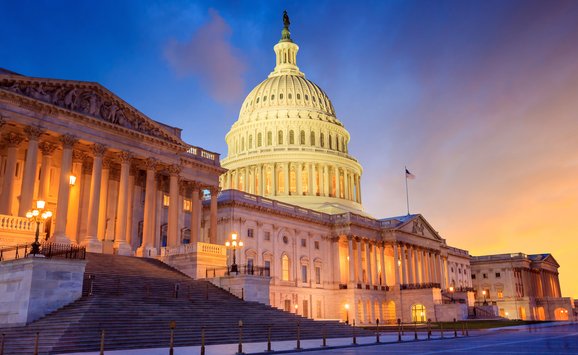The nation's experience under the National Environmental Policy Act during the first three years of its operation is surveyed in this excerpt from a forthcoming RFF book distributed by The Johns Hopkins University Press: NEPA in the Courts—A Legal Analysis of the National Environmental Policy Act, by Frederick R. Anderson of the Environmental Law Institute.

Congress through the National Environmental Policy Act of 1969 (NEPA) has established a national policy requiring all federal agencies to give full consideration to environmental effects in planning programs. To ensure that the agencies implement this policy, NEPA prescribes specific "action-forcing" procedures which agencies must observe. This requirement begun to bring about fundamental reform in the decision-making processes of federal agencies.
From the beginning the courts have played a central role in enforcing NEPA's requirements, especially the action-forcing procedures. In three years a NEPA cause of action has been included in 149 separate litigations, some of which have produced more than one reported opinion.
One action-forcing procedure in particular has received the lion's share of attention during NEPA's first three years. In the brief compass of § 102(2) (C), Congress required each federal agency to prepare a detailed statement of environmental impact on every major federal action that might significantly affect environmental quality. By December 31, 1972, the agencies had filed 3,635 of these statements with the Council on Environmental Quality. The statement must discuss alternatives to the proposed action and must be circulated for comment to other federal agencies, to state and local governments, and to the public. The section's strict procedural duties, which courts can enforce, require that the agencies commit themselves—on paper and in advance—to the possible environmental consequences of their proposed actions. Court-enforced full disclosure, needless to say, promises basic change in the pattern of federal decision making in the environmental area. By focusing largely on the decisions that interpret § 102(2) (C), we are not discounting the Act's other important provisions. So far, however, NEPA's goals have been realized primarily through this one key provision.
The courts have required about three years to establish the basic trends of interpretation for the first generation of NEPA issues, i.e., those primarily concerned with § 102(2) (C) : Must all agencies comply with NEPA? What level of federal involvement in an action requires preparation of a statement? What magnitude must a "major" federal action achieve before an impact statement must be prepared? Does the Act apply to the environmentally protective regulatory programs of federal agencies? How does § 102(2) (C) apply to projects already in progress when NEPA was enacted? Must it always be a federal official who prepares the impact statement? How much and what kind of information must it contain? How is NEPA to be applied when several agencies are involved in a single action? To be sure, the courts have not completely answered these questions for which Congress provided only partial answers or, as is often enough the case, no answers at all. Much progress has been made, however; enough to permit a tentative first attempt to put the house of judge-made NEPA law in order.
We are aware that hairsplitting judicial interpretations imposed on a statute of broad scope may exalt form over substance and even prevent an agency from setting its own, better-conceived course toward the statutory goal. At this point we would do well to remember Gibbon's account of Diocletian's administrative reforms, which ultimately backfired and had the effect of hardening the arteries of the Roman bureaucracy. NEPA, after all, is an administrative reform statute.
We think, however, that in spite of some excesses in reading the Act too literally, NEPA's potential for lasting reform of federal government rests on the detailed judicial interpretations handed down in the first three years. These decisions lead the agency horses to water, even if they do not always drink. The courts have kept the agencies from straying from the careful, focused consideration of environmental values in day-to-day decision making that Congress intended.

It appears likely that the courts will continue to bring NEPA to bear even more directly on the substance of agency decision making. If this is to be the case, a host of new issues will arise for resolution. Several district and circuit court opinions have held that NEPA imposes substantive duties on agencies to make environmentally sound decisions. These cases affirm that agency discretion to make the final decisions on federal actions is still quite wide, but the process of circumscribing it through further interpretation of NEPA has apparently begun.
Although it is too early to tell, a recent district court opinion from Texas may constitute something of a benchmark for NEPA in the courts. Just as the lengthy district court opinion two years ago in the Gillham Dam case led the way in identifying and resolving key first-generation NEPA issues, the even more lengthy decision in the Trinity River—Wallisville Dam case in early 1973 may point the way toward an eventual synthesis of NEPA's substantive and procedural provisions so that NEPA goes far beyond its role as a mere full disclosure statute. In the Trinity River—Wallisville Dam case, each step in the Army Corps of Engineers' entire decision-making process for a $1.3 billion river basin development project, and especially for a $29 million component dam, was minutely examined by the court in light of NEPA's provisions. Even the Corps' techniques for determining the cost-benefit ratio for the projects were subjected to intense scrutiny; the Corps was ordered to revise its methods of computation—and, one must unavoidably surmise, its results—in light of NEPA's requirements.
If the courts require revision of existing agency review processes to ensure decisions consistent with NEPA, and if they actually begin to circumscribe the scope of allowable agency decision making under NEPA, then a second generation of NEPA issues will have been born.





